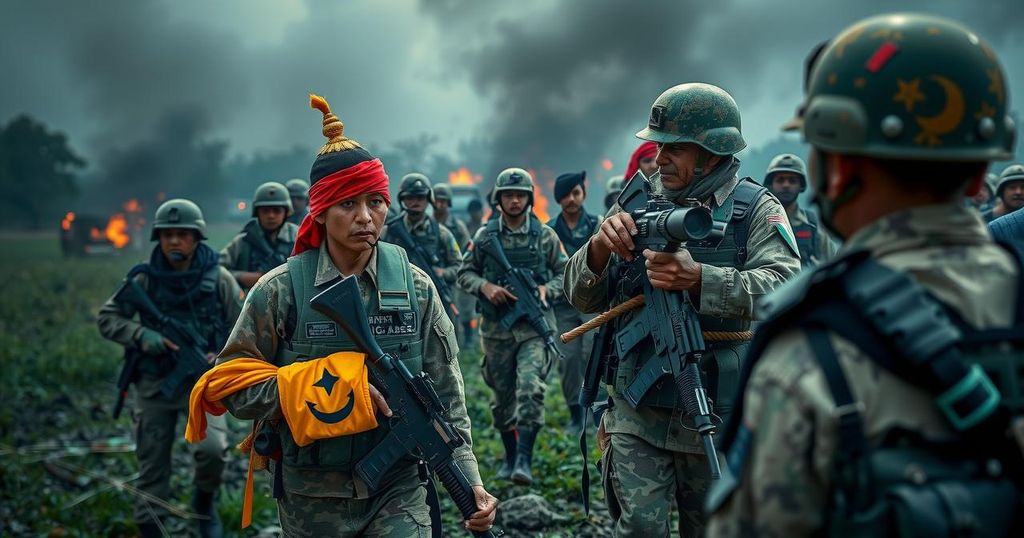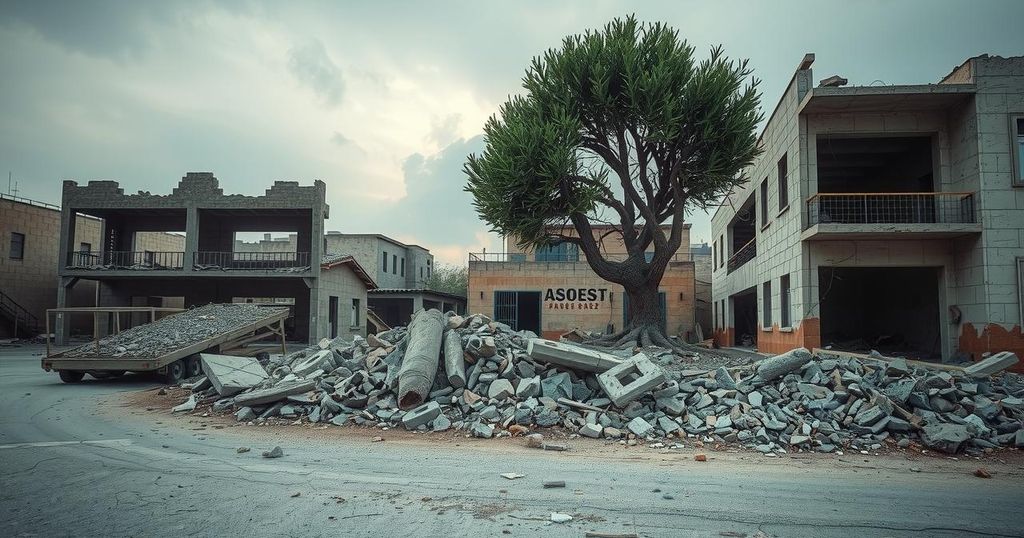Myanmar’s Civil War: An Overview of Military, Political, and Crime Dynamics
Myanmar has faced escalating civil unrest since a military coup over two years ago, leading to a resilient yet under-resourced armed resistance in rural and urban areas. While the junta has attempted to suppress this resistance through violent force, it has failed to completely extinguish these groups. International responses vary, with significant support from Russia and India toward the junta, contrasting with the limited aid provided to the resistance by Western nations. Recent discussions have examined these dynamics alongside the state of illegal economies in Myanmar, exploring the challenges that lie ahead for the country.
Over two years ago, a military coup in Myanmar abruptly halted the country’s decade-long journey towards democracy. In response, a surprisingly resilient armed resistance has emerged from both rural and urban Bamar regions, leading to an escalation of violent conflict that predominantly affects minority ethnic areas. Despite the junta’s harsh military tactics, the armed groups have continued to operate effectively, and the civil war has expanded significantly. However, the resistance forces, including various Bamar groups and ethnic organizations, remain far from achieving victory against the junta. The junta has received substantial support from Russia—providing weapons—and India, which has engaged in both armament and diplomacy to bolster the military regime. Conversely, China’s assistance has been more subtle, though it has supported the junta politically. While Western nations have denounced the coup and imposed sanctions on the military leaders, they have not supplied the resistance with the military expertise and financial backing necessary to mount a formidable challenge. On March 13, the Initiative on Nonstate Armed Actors facilitated a webinar involving a thorough examination of the dynamics surrounding violence in Myanmar, the capabilities and limitations of both the armed opposition and the military, changes within the nation’s illicit economies, and the challenges that lie ahead should peace negotiations succeed. The discussion was moderated by Vanda Felbab-Brown, the director of the Initiative at Brookings, featuring insights from panelists Richard Horsey, Yun Sun, Min Zaw Oo, and Thinzar Shunlei Yi.
The ongoing civil war in Myanmar stems from a military coup that reversed the democratic strides made over the previous decade. This confrontation has given rise to a vigorous armed resistance amid increasing violence, particularly in ethnic minority regions. Despite the junta’s extensive military might often deployed with brutal tactics, the resilience of resistance groups signifies a complex conflict that has relevant geopolitical implications due to international involvement, particularly from nations such as Russia, India, and China. Understanding these foundational conflicts and the dynamics of local economies enhancing the war effort provides context for the civil war’s progression and potential resolutions.
In conclusion, the civil war in Myanmar represents a significant challenge to regional stability and highlights the complexities of military resistance against a powerful junta. The dynamics of international support illustrate the geopolitical stakes involved while emphasizing the desperate need for sustained assistance toward the resistance groups. The insights gained from recent expert discussions provide critical perspectives on the future trajectory of Myanmar’s conflict and the potential pathways toward peace.
Original Source: www.brookings.edu








Post Comment